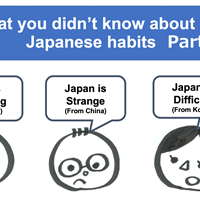JLPT for Studying and Working in Japan

JLPT (Japanese Language Proficiency Test) is without a doubt one of the most popular Japanese language tests for non-native speakers. It can be taken in Japan as well as in many other countries around the world. If you already live in Japan or plan to study or work there in the future, taking the JLPT can be extremely beneficial. While there is nothing that prevents you from preparing for the test on your own, attending one of the language schools can help with your studies and make the process more efficient. If you live in Tokyo, please check our list of Japanese language schools in Tokyo.
There are also a variety of other ways to improve your Japanese language skills. For instance, language exchange can be a great way to practice Japanese. You can also study from the comfort of your home with an online tutor. If you are looking for a job in Japan, be sure to check our articles on job search websites, recruitment agencies, and Japanese resumes. Those interested in studying at university in Japan, please read the following article: "List of Japanese Universities that Actively Accept International Students". We also have many articles covering professional training colleges (vocational schools) including beauty colleges, manga/animation design schools, and more.
What is JLPT?
JLPT or Japanese Language Proficiency Test is organized by the Japan Foundation and Japan Educational Exchanges and Services. It is taken by language learners to assess their knowledge of Japanese. It began in 1984 and is conducted both in Japan and in many other countries around the world. The Japanese Language Proficiency Test used to have four levels. However, it was later revised and the number of levels was increased. From 2010, the test has five levels ranging from N5 (beginner) to N1 (the most advanced). In Japan, the JLPT is held twice a year, in July and December. However, it may be held only once a year in some cities overseas. For a list of JLPT test sites located overseas, please check here.
Why Would I Need JLPT?

You may be wondering about benefits of taking the Japanese Language Proficiency Test. To begin with, it is an official certificate that proves your level of Japanese language. When considering foreign candidates for employment, some companies may request the JLPT certificate. It can also be used to meet some of the language requirements for studying at the university level in Japan, "specified skilled worker (ⅰ)" visa, certain national exams in the medical field, or to earn extra points for “points based preferential immigration treatment for highly skilled foreign professionals".
JLPT Levels
As it was already stated, the JLPT has 5 levels, ranging from the beginner level of N5 to the most advanced N1. When applying for the test, you must select the level you wish to take. Beginners may start with N5 and work their way up to N1. If you feel confident about your Japanese language ability, you can skip all other levels and go straight to N1. It is not required to take JLPT levels in any particular order. There is also no limit on the number of attempts. In order to pass the test, you would need to achieve the minimum required score in total and each section.
If you are not confident about speaking or writing Japanese characters by hand, no need to worry! There is no speaking and writing sections in the test. The JLPT assess your knowledge of Japanese grammar, vocabulary, as well as reading and listening skills. The higher level of JLPT you take, the more time the test will require. For instance, the listening section of N5 is 30 minutes long, but it is 55 minutes for N1.
JLPT N5
The JLPT N5 can be recommended for Japanese language learners who have studied basic grammar, vocabulary, etc. to some extent, and would like to have their language proficiency formally evaluated. At this level, Japanese language learners can read katakana, hiragana, and some kanji. The test consists of language knowledge (vocabulary), language knowledge (grammar) · reading, and listening sections.
JLPT N4
At this level, it can be said that one can use Japanese at the basic level. This is also the minimum level of the JLPT that can be used when applying for "specified skilled worker (ⅰ)" visa. The test consists of the same sections as JLPT N5.
JLPT N3
Passing the JLPT N3 indicates that you have mastered Japanese language to the point where you can use it in daily life. Although it may be useful when applying for certain jobs, many employers will probably ask for N1 or N2 certificates of Japanese Language Proficiency Test. The sections for the test are the same as above N5 and N4.
JLPT N2
If you intend to use the JLPT for educational or professional purposes, there is a high probability that you would be asked to demonstrate at least N2 level. Generally speaking, this can be considered as the minimum language level for people wishing to work or attend a university in Japan. Of course, there are certain exceptions. Regarding the “points based preferential immigration treatment for highly skilled foreign professionals", you would earn 10 points for passing the JLPT N2. N2 test consists of language knowledge (vocabulary/grammar) · reading, and listening sections.
JLPT N1
This is the highest level of Japanese language proficiency that can be assessed by the JLPT. Whether you are looking for a job or plan to study at the university or college in Japan, N1 will certainly be helpful. If you apply for “points based preferential immigration treatment for highly skilled foreign professionals", it will get you 15 points. This level of the JLPT is also a language requirement for taking certain national examinations for foreign medical degree or license holders (subject to certain exceptions). The sections for N1 test are the same as above N2.
If you are not sure what level of the JLPT to aim for, you can always check sample questions in a form of quiz for each level. It is a very useful tool to get a grasp of what kind of Japanese language knowledge is required by various levels.
Textbooks

While living in Japan and using Japanese on daily basis is an excellent way to improve your language skills, preparing specifically for the JLPT is also important. Textbooks are effective for accumulating necessary vocabulary, studying grammar structures, as well as practicing listening and reading skills.
Among many fantastic textbooks, "Nihongo Sou Matome" can be especially recommended. This series of textbooks covers all levels from N5 to N1. "New Kanzen Master" and official practice workbooks are also highly recommended. Please note that there are no "Shin Kanzen Masuta" for N5 level.
If you feel you are ready to take the JLPT , please check the official website for more information.
















